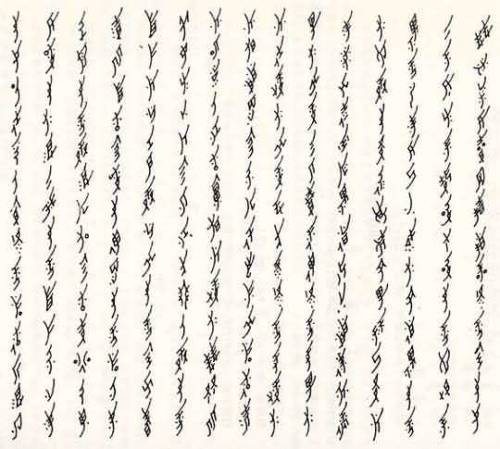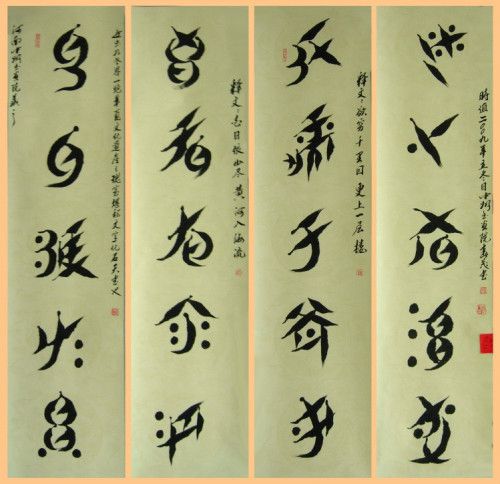#the only gender-specific writing system in the world
Nüshu, the only gender-specific writing system in the world
Nüshu (女书; literally “women’s writing”), is a syllabic script, a simplification of Chinese characters created and used exclusively by women in the Jiangyong County in Hunan province. It remains the only gender-specific writing system in the world.
Unlike the standard written Chinese, which is logographic, Nüshu is phonetic, with each of its approximately 600-700 characters representing a syllable. This is about half the number required to represent all the syllables in the local variety of spoken Chinese as tonal distinctions are frequently ignored. In that sense, Nüshu is the most revolutionary and thorough simplification of Chinese characters ever attempted. Zhou Shuoyi, described as the only male to have mastered the script, compiled a dictionary listing 1,800 variant characters and allographs.
In the sex-segregated traditional China, girls and women did not have the same access to literacy as boys and men, though throughout China’s history, there were always women who could read and write. Most people - male or female - were illiterate. Reforms of the early 20th century, which popularized education and promulgated a writing style reflective of speech (baihuawen) to replace the arcane literary style (wenyanwen), increased literacy rates for both males and females. It is not known when or how Nüshu came into being, but, because it is clearly based in the standard Chinese script, hanzi, Nüshu could not have been created before standardization of hanzi (circa 900). Many of the simplifications found in Nüshu have been in informal use in standard Chinese since the SongandYuan dynasty (13th - 14th century). The script seems to have reached its peak during the latter part of the Qing Dynasty(1644–1911).
The script was suppressed by the Japanese during their invasion of China in the 1930’s-40’s, because they feared that the Chinese could use it to send secret messages, and also during the Cultural Revolution. It is no longer customary for women to learn Nüshu, and literacy in Nüshu is now limited to a few scholars who learned it from the last women who were literate in it. The original writers of the script died in the 1990’s (the last one in 2004). However, after a recent documentary about Nüshu, the government has started to popularize the effort to preserve the increasingly endangered script, and some younger women are beginning to learn it.
Post link





